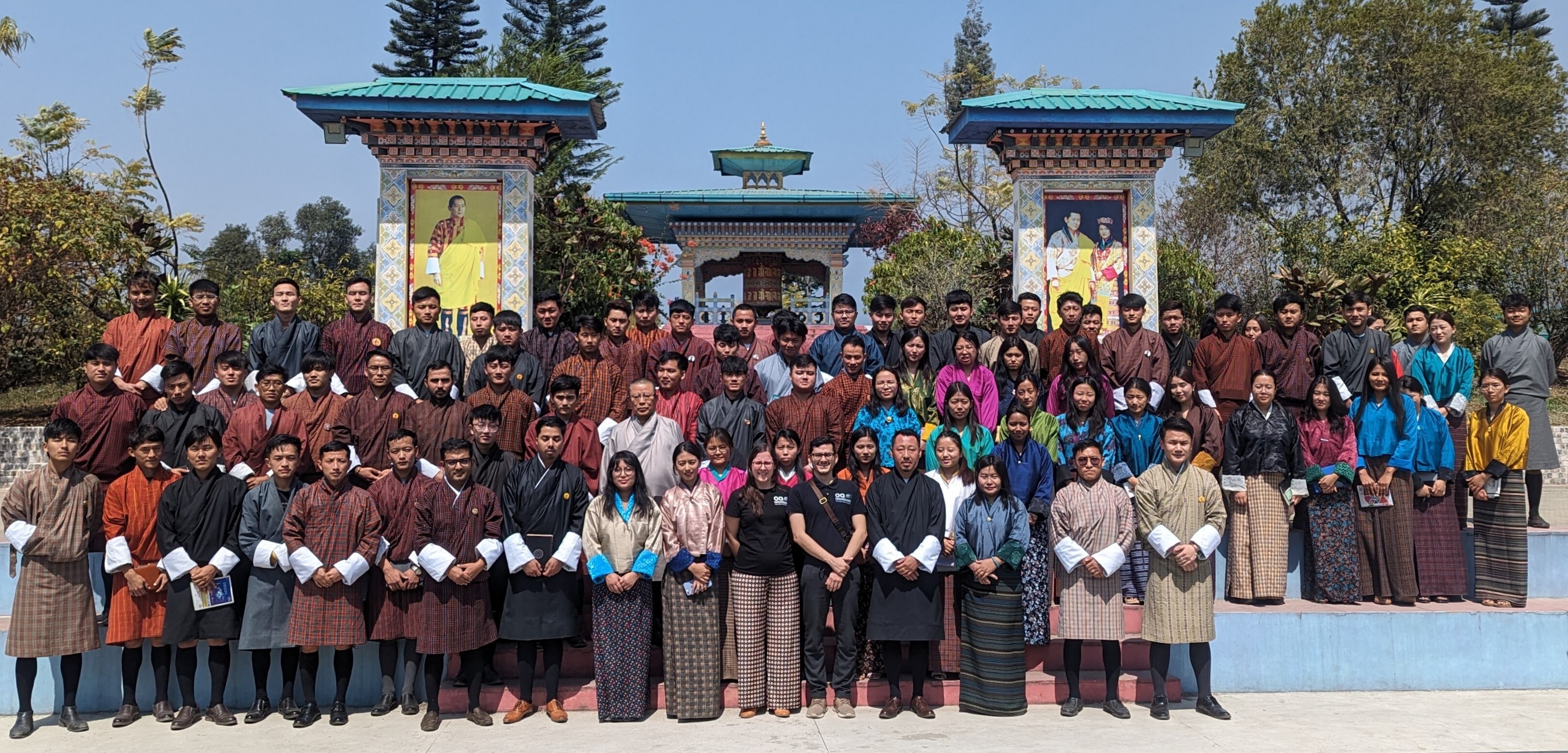
Thimphu, Bhutan - March 15, 2024. The Global Earthquake Model (GEM) Foundation's USAID-supported project, Forecasting and Communicating Earthquake Hazard and Risk (FORCE), recently concluded a successful week of activities in Bhutan (March 11-15, 2024), led by GEM's Alejandro Calderon and Catarina Costa. In Bhutan, the FORCE project focuses on strengthening local capacities and improving earthquake risk reduction in the country (report with detailed information).
Engaging Stakeholders: Collaborative Efforts for Risk Reduction
The activities in Bhutan commenced with productive meetings on March 11th, where Alejandro Calderon and Catarina Costa engaged in constructive dialogues with key government agencies responsible for disaster management and cultural preservation. These discussions laid the groundwork for collaborative efforts, ensuring that the FORCE project's objectives align closely with Bhutan's specific needs.
Specifically, discussions with the Department of Disaster Management (DDM) highlighted their interest in participating in training programs and potentially hosting project results on their online Geonode platform, expected to be operational by mid-2025. This collaboration will ensure wider accessibility of critical risk information.
The Department of Cultural Heritage (DCH), responsible for safeguarding Bhutan's heritage sites, echoed similar enthusiasm. They highlighted their existing database of classified buildings and risk maps and expressed keen interest in leveraging the project's training and OpenQuake software to gain a deeper understanding of earthquake risks to cultural heritage structures.
On March 12th, Day 2 a workshop titled "Seismic Risk in Bhutan: What we know and where we are headed," brought together a diverse group of 25 participants from government, academia, and emergency response sectors. Supported by USAID BHA and RUB, this session served as a platform for knowledge exchange and discussion on how the project's outcomes can inform policy decisions and future risk reduction strategies in Bhutan.
Empowering Future Generations: Knowledge Dissemination and Capacity Building
The Royal University of Bhutan (RUB) serves as the central hub for the FORCE project in Bhutan. A meeting with the university's President reaffirmed their commitment to the project and opened doors for future collaborations with GEM.
Building upon this momentum, a well-attended session introduced participants to the concepts of earthquake hazard and risk assessment and showcased the functionalities of OpenQuake held at RUB's College of Science and Technology in Phuntsholing. The sessions gathered over 70 participants, including students and faculty members from civil engineering and geology programs. This session not only showcased the project's objectives but also laid the groundwork for future capacity-building initiatives within Bhutan's scientific community.
“The project outcomes will significantly benefit various stakeholders, including informing local building codes, risk mitigation strategies, resource allocation, and emergency response plans. Students and faculty from the College of Science and Technology have actively participated in the project workshops and are using the provided materials for teaching and research. The project is expected to equip students with practical skills and provide research opportunities for faculty to integrate findings into curriculum and building code development.” - Nimesh Chhetri, Lecturer - Head of the Centre for Disaster Risk Reduction and Community Development Studies, CST-RUB. More on Nimesh’s insights here.
Reflecting on the successful week in Bhutan, Alejandro highlighted the importance of collaborative partnerships, stating, "Our engagement with key stakeholders and the enthusiastic participation from the Bhutanese scientific community underscore the collective commitment towards enhancing earthquake resilience in Bhutan."
Catarina Costa echoed these sentiments, highlighting the significance of knowledge-sharing initiatives in seismic risk reduction. "Through collaborative efforts like the FORCE project, we aim to support local communities with the necessary tools and insights to mitigate seismic risks effectively," she remarked.
Moving Forward: A Shared Vision for a More Resilient Bhutan
The FORCE project activities in Bhutan illustrated the importance of collaboration in earthquake risk reduction. Stakeholders across government, academia, and the public domains have expressed their interest in leveraging the project's outcomes.
“The successful workshops and meetings have opened up extensive possibilities for further collaboration between RUB, GEM, and USAID BHA. RUB can act as GEM's local representative, facilitating communication, data acquisition, and curriculum development focused on disaster management and risk reduction.
The collaboration offers exciting opportunities for joint research in areas like landslide and flood hazard assessment, along with studies on non-structural elements in Bhutan. Additionally, RUB can leverage financial aid from USAID BHA and expertise from GEM to enhance ongoing or planned earthquake research projects.” - Nimesh Chhetri, CST-RUB.
During the discussions, the College of Science and Technology (CST) has been identified as the central hub for future project communication and knowledge exchange in Bhutan. This includes facilitating access to existing data, ensuring the maintenance and distribution of project results, and collaborating with the Royal University of Bhutan to develop and update earthquake risk models.
Looking beyond the current project, stakeholders expressed interest in collaborating on future initiatives. These include:
Refining earthquake hazard models
Conducting detailed studies on the vulnerability of traditional buildings
Expanding risk assessments to include cultural heritage sites, bridges, and dams
Investigating other natural hazards like floods, landslides, and rockfalls
The FORCE project's multifaceted approach, covering stakeholder engagement, knowledge dissemination, and capacity building, demonstrates the transformative potential of collaborative efforts in disaster risk reduction.
With gratitude extended to Bhutanese partners, including the Royal University of Bhutan (RUB) and associated institutions, as well as the continued support from USAID BHA, the Foundation remains steadfast in its mission to help create a more earthquake-resilient Bhutan through collaboration.
Learn more about the FORCE project: https://www.globalquakemodel.org/proj/force.
Disclaimer
This web article about the FORCE project activities in Bhutan is made possible by the generous support of the American people through the United States Agency for International Development (USAID). The contents are the responsibility of the Global Earthquake Model (GEM) Foundation and do not necessarily reflect the views of USAID or the United States Government.
No images found.
GALLERY




VIDEO

RELATED CONTENTS







